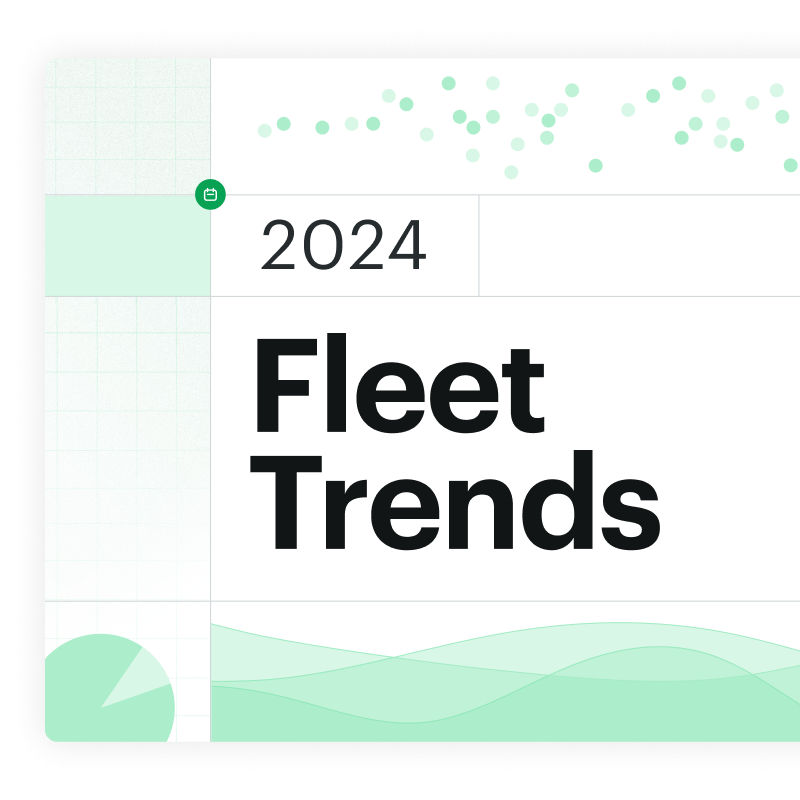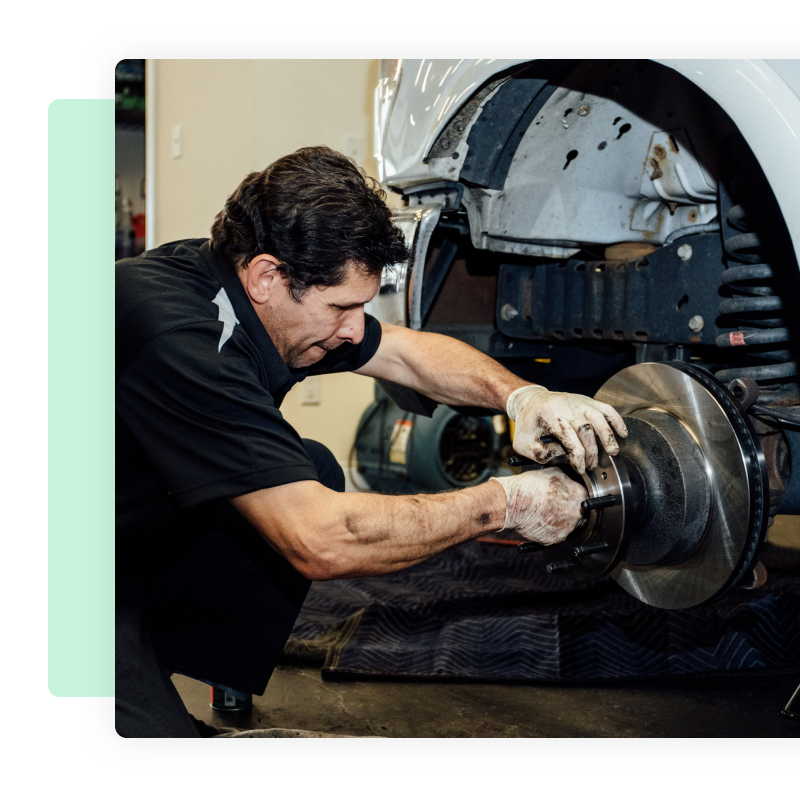Comparing the Infrastructure Policy of Presidential Hopefuls
With election year around the corner, it’s more important than ever to really look at the candidates’ policies, and we’re doing just that — at least, in terms of infrastructure and how it relates to fleet. After all, a well-paved road can have a dramatically positive impact on asset maintenance intervals and reducing maintenance spend.
Jan 22, 2024
8 min read

By now, several administrations have talked about improving the U.S. infrastructure, however not much has come to fruition. According to Brookings, “From the Obama administration’s ‘shovel-ready’ projects to the Trump administration’s trillion-dollar plan, tangible results have been vexingly scarce.” With state and local governments in charge of picking and choosing which projects will take place and the federal government funding and regulating those projects, there seems to be a disconnect keeping much from happening.
Challenges for Administrations Past
The Obama Administration
Infrastructure seems to be an afterthought for current presidential candidates, with fewer than half speaking on the topic. And it is a tough topic to tackle. Struggles have been ongoing at least as far back as the Obama administration. “A 5-year, $305-billion bill to address the nation’s aging and congested transportation systems was signed into law [...] by President Barack Obama, who said it will put Americans to work and provide states with the federal help they need to commit to long-term projects,” according to The Associated Press.
Unfortunately, this didn’t quite pan out. In an article for Forbes, Milton Ezrati laid out the causes of failure in Obama’s — and potentially Biden’s — infrastructure policies. “Biden relies on the same three justifications as did Obama: 1. the long-overdue need to refurbish the nation’s infrastructure, 2. “shovel ready” projects will immediately trim unemployment rolls, 3. government spending would ‘jump start’ a broader surge in the economy as the private sector seizes opportunities uncovered by the government’s effort and multiplies the economic effect of every federal dollar extending the positive impact into the indefinite future,” he explains. “Before charging off in a manner entirely parallel to his predecessor, Biden might do well to note how Obama’s effort failed and on each of these same three points. In the years following the 2009 spending effort, unemployment remained high, and the U.S. economy suffered the slowest recovery on record.
The Trump Administration
The problem with relying on “shovel-ready” projects is that they don’t exist today. It can take years for a project to be approved, which was something the Trump administration tried to address. “For many infrastructure projects, the permitting process can be fragmented, inefficient, unpredictable, and costly. Recognizing these challenges, in August 2017, President Trump issued EO 13807, to reduce unnecessary duplication and uncertainty in the Federal environmental review and authorization process that can delay major infrastructure projects and hold back the American economy,” according to The White House. “EO 13807 established a One Federal Decision policy for Federal environmental reviews of major infrastructure projects. The One Federal Decision policy sets a goal for completing environmental reviews for major infrastructure projects within 2 years.”
DJ Gribbin, former nonresident senior fellow, Metropolitan Policy Program, explains some of the wrong turns the Trump administration took when it came to infrastructure: “Starting in January 2017, I spent 15 months in the Trump White House working with hundreds of governors, mayors, county executives, and members of Congress — all of whom were eager to come up with sensible policies to improve our nation’s infrastructure. But the administration’s plan faltered due to several missteps. Now, as President Joe Biden takes his own shot at broad infrastructure reform, his team would do well to understand what went wrong for the previous White House.”
“In a White House full of bankers and investors, the Trump administration’s initial infrastructure strategy seemed blazingly obvious: put together a list of the best projects, borrow money at Treasury rates, and directly fund projects based upon return on investment,” continues DJ. “However, the drafters of this approach were unfamiliar with the nexus between U.S. infrastructure and the federal government, assuming that the government is an owner of that infrastructure. On the contrary, the Bureau of Economic Analysis estimates that the federal government owns only around 6% of the nation’s transportation and water infrastructure.”
The Current Biden Administration
Perhaps the Biden administration did learn something from both the Obama and Trump administrations as his administration’s approach to infrastructure has so far not been bad. But… it also hasn’t really presented any big change, so we’ll just call this “too early to tell.”
Earlier this year, the White House celebrated nearly $200 billion spent on environmental and transportation projects, including improvements on roads, bridges and public transportation through the bipartisan infrastructure law, or Infrastructure Investment and Jobs Act (IIJA), which was passed in 2021. The numbers, though, seem to indicate that a majority of that spend was used on the environmental side. “The IIJA reauthorized federal surface transportation programs, including regular annual funding for transit programs, for the 2022–2026 period,” according to the Congressional Budget Office. “Funding for public transportation programs increased from an average of $13 billion per year over the 2016–2021 period to an average of about $18 billion per year during the 2022–2026 period.” That said, there are states carrying out very large, very expensive infrastructure projects with IIJA funding; so not bad, but not a grand change.
If either Trump or Biden end up with the presidential win, they have a chance to look at past mistakes in their administration’s infrastructure policies and set a corrective course to make a real difference.
2024 Fleet Trends
Check out our 2023 fleet industry trend retrospective, including hits and misses, as well as what to look for in 2024!
Learn moreThe Contenders
Since we’ve touched on both Trump and Biden already, we’re just going to cover the candidates who actually talk about infrastructure, regardless of party. This is strictly policy talk.
Haley
Nikki Haley's campaign page doesn't disclose much in the way of potential policies or specific issues she wants to tackle and during her appearances, she mostly focuses on foreign policy. She did, however, have some words about the aforementioned White House's IIJA celebration: "There’s nothing to celebrate about a woke, bloated infrastructure law full of waste, labor union handouts, and green giveaways."
The South Carolina Democratic Party (SCDP) then addressed her comments in a way that could give some insight into how she handled transportation infrastructure policy during her governorship: "Supporting better roads, bridges, while creating good-paying jobs should’ve been Haley’s priority as governor, but it took President Joe Biden working across the aisle, including with South Carolina’s senior Republican senator, to deliver for the Palmetto State."
While this definitely appears to be a calling out of her failings as governor when it comes to transportation infrastructure, it's important to note the potential bias here. Let's just say Haley's Record of Results speaks for itself.
Kennedy Jr.
In his plan for revitalization, Robert F. Kennedy Jr. has called for the reversal of “America’s economic decline,” including its “decaying infrastructure,” but apart from that, there isn’t much said. While this does show he understands the need for infrastructure improvements, we don’t really have any historical background for him in this arena, making it hard to predict what infrastructure policy might look like under a contemporary Kennedy administration.
Williamson
According to Marianne Williamson’s campaign page, “Every dollar we invest in education, infrastructure, and healthcare helps unleash the spirit of the American people.” The page goes on to state that “The Williamson Administration will champion [...] investing in our infrastructure, creating a green economy with jobs that rebuild roads, bridges, and rails, increasing renewable energy power, updating clean water systems, improving our rail system and massively investing in public transit.”
It seems Marianne Williamson could be likely to invest heavily in infrastructure.
Suspended Campaigns
DeSantis
Per his campaign page, Ron DeSantis wants to implement policy to “streamline the environmental review process for energy and infrastructure projects,” signaling a potential investment in infrastructure, especially if he’s planning anything similar to what he’s been doing in Florida.
“Governor DeSantis’ Framework for Freedom Budget includes significant transportation infrastructure investments,” including “$5.5 billion for highway construction to include 118 new lane miles, $1.6 billion in resurfacing to include 2,632 lane miles, $726.6 million for repairs of 65 bridges and replacement of 19 bridges, $149.3 million in seaport investments, $404.3 million in aviation investments and $791.3 million in rail and transit investments,” according to the Florida Department of Transportation. “Several priority investments that further strengthen Florida’s transportation infrastructure are included in this historic budget, with nearly 1,800 projects statewide actively in construction, or which will break ground in the next fiscal year.”
Of the candidates, DeSantis may be most likely to invest heavily in infrastructure improvements.
Update: As of January 21, 2024, Ron DeSantis suspended his presidential campaign.
Ramaswamy
While Vivek Ramaswamy hasn’t outlined any sort of infrastructure plan on his campaign site, he did make his feelings on the topic known in a post on X (formerly Twitter): “Let’s get back to the basic rules of the road: Transportation Czar @PeteButtigieg should focus on actual infrastructure instead of ‘climate justice’ and ‘construction diversity.’ Ramaswamy has been quite vocal of his plans to reel in climate change-related spending and shut down multiple agencies, all of which frees up some budget that could potentially go toward infrastructure improvements.
Update: As of January 15, 2024, Vivek Ramaswamy suspended his presidential campaign.
Planning for the Future
Poorly maintained roadways can significantly affect fleets. Potholes, uneven surfaces and worn-out road markings not only pose dangers to drivers and passengers, they also take a toll on vehicles, leading to increased maintenance costs, reduced fuel efficiency and more frequent breakdowns.
Traffic congestion, another symptom of poor infrastructure, heavily afflicts fleets operating in urban areas worldwide, leading to longer travel times, increased fuel consumption and greater wear and tear on vehicles. The impact isn’t just financial; it can translate into delayed deliveries, missed appointments and unhappy customers.
Which candidate gets elected will impact what improvements will happen with the infrastructure and in what timeframe. Understanding both how infrastructure affects your fleet and what each candidate’s stance on infrastructure is can better equip you to prepare your fleet for the future, whether that’s improving maintenance schedules to avoid additional vehicle wear and tear or optimizing routes to avoid the boom in road and bridge construction.
Stay on Top of Maintenance
No matter how shoddy the roads get, Fleetio can help you ensure your assets are in tip-top shape through ideal maintenance schedules, automated workflows and maintenance reminders.
Learn more
Senior Fleet Content Specialist
As a Senior Fleet Content Specialist at Fleetio, Rachael Plant uses her near decade of industry experience to craft practical content aimed at helping fleet professionals tackle everyday challenges with confidence.
LinkedIn|View articles by Rachael PlantReady to get started?
Join thousands of satisfied customers using Fleetio
Questions? Call us at 1-800-975-5304

